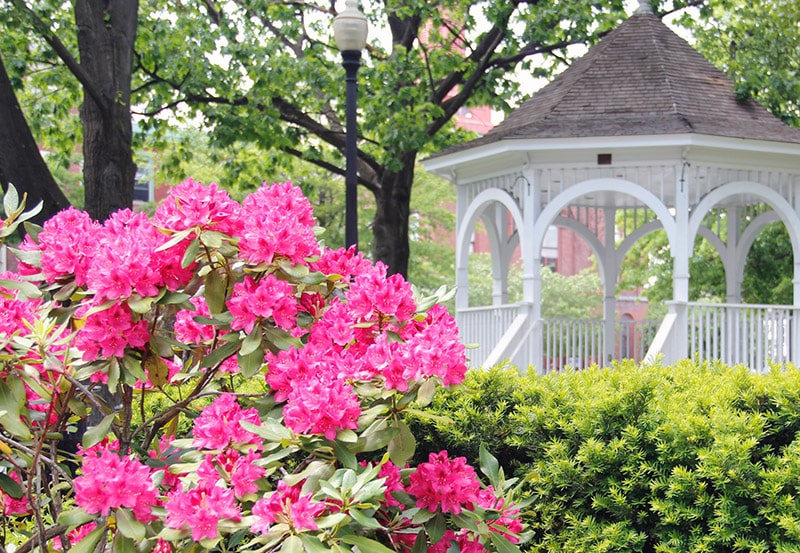Gardens
Rhododendron Care | Planting and Maintenance Tips
Rhododendron care is simple since this flowering shrub is virtually maintenance-free. Follow these easy steps to keep your shrubs flowering year after year.

Rhododendron Care | Planting and Maintenance Tips
Photo Credit : Brenda DarrochThe stunning and stately rhododendron plant — native to Asia — is a popular and much-loved landscaping element in New England. Large blossoms in hues of pink, purple, red, and white bloom each spring, attracting pollinating insects. A member of the Azalea family, this ornamental shrub requires very little care and maintenance once it is established, making rhododendron care a snap. It isn’t prone to insect infestation and requires little, if any, pruning. In the Northeast, early spring or early fall planting is the best time to put a rhododendron into the ground.
Rhododendron Care
Rhododendron Planting Tips
- Choose an area for planting that receives ample amounts of both sunlight and shade — filtered sunlight is ideal. Before attempting to plant, test your soil’s pH. Rhododendrons prefer acidic soil with a pH of about 5.5. PH test kits are simple to use and available to purchase at garden centers. If the soil is not acidic enough, it can be amended with organic matter, such as peat moss. Rhododendrons typically do well in sandy soil.
- Dig a hole 2-3 times the width of the root ball and deep enough so that the top of the root ball is covered by a few inches of soil, but not deep enough to cover the stem of the plant. Place the plant in the hole and water well before covering the root ball.
- Mulch lightly around the top of the root ball to help retain moisture.
Rhododendron Maintenance
- Thorough daily watering is preferred throughout the season of the first planting. After the first year, a new plant should be fine on its own as long as the soil is kept moist.
- In winter, smaller rhododendron shrubs will need protection from heavy snowfall. Before the first snowfall, wrap the branches lightly in burlap and secure with twine. An A-frame style covering or a box style shelter is the best way to shield small, newly planted Rhododendron plants during the harsh winter months. Remove the coverings after the danger of a late-term snow storm in the spring.
SEE MORE:
When to Prune Shrubs | Gardening Advice
Witch Hazel Guide | Winter-Flowering Shrubs
The Beautiful Winterberry Bush
Shelley Wigglesworth
Shelley (Fleming) Wigglesworth is an award-winning freelance journalist from Maine and a certified Maine Master Gardener who writes gardening articles on a regular basis for NewEngland.com. Her work can be found in the following publications: The Village Magazine, York County Coast Star, Yankee Magazine (online), National Fisherman Magazine, Commercial Fisheries News, Points East Magazine, Coastal Angler Magazine and The Maine Lobstermen's Association's "Landings."
More by Shelley Wigglesworth

